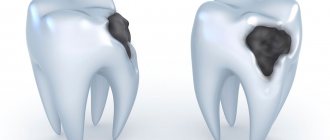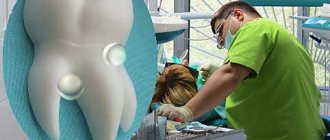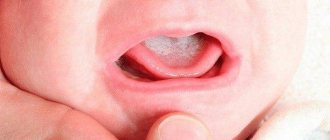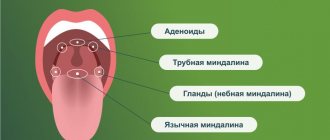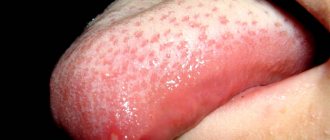What are lymph nodes?
Lymph nodes are structures of the immune system that act as a specific filter for microbial antigens. Lymph flowing through the nodes is filtered, and substances that could cause infection are captured and removed. The nodes are also involved in the production of antibodies. Their size depends on the age of the child. They should not be palpable in newborns and infants. Lymphadenopathy, or enlarged lymph nodes, mainly affects children of preschool and primary school age.
Contact with a large group of peers causes the child to develop immunity. It is not difficult to become infected in kindergarten, and a history of infection often manifests itself as enlarged and clearly palpable lymph nodes
. If they have enlarged as a result of illness, this should not be a cause for concern. An alarming symptom is lymphadenopathy that is not associated with a previous disease, as it can be a symptom of serious diseases, including malignant neoplasms. Pediatricians refer the child for diagnostics to an oncology clinic so as not to miss anything. Find out what causes swollen lymph nodes in your child and what diagnostic tests should be done.
Lymphadenitis in children
As a rule, lymphadenitis in children affects the lymph nodes in the face and neck (most often - submandibular and cervical on one or both sides, less often - parotid, buccal, occipital, behind-the-ear), in some cases - axillary, inguinal.
The serous stage of acute nonspecific lymphadenitis in children (days 1-3 of the disease) is manifested by painful, noticeably enlarged regional lymph nodes that are densely elastic to the touch, without loss of their mobility and the development of a local skin reaction. The child's general condition is not affected; the temperature ranges from normal to subfebrile values.
The transition of acute lymphadenitis to the purulent stage (days 3-6 of the disease) occurs with pronounced local signs and a sharp deterioration in the well-being of children. Signs of intoxication are observed: chills, high temperature (up to 40ºC), headache, severe weakness, lack of appetite and sleep disturbance. In the area of the affected lymph nodes, intense nagging or shooting pains, periadenitis, local hyperemia and swelling of the skin occur. The development of adenophlegmon with the appearance of foci of fluctuation and the release of purulent inflammation beyond the lymph node is possible. Adenophlegmons of the maxillofacial area can be complicated by thrombosis of the cavernous sinus, mediastinitis, and sepsis.
The chronic form of lymphadenitis in children can develop primarily if the causative agents are weakly virulent microorganisms, or become a continuation of the acute form of the disease. In a chronic course without exacerbation, the lymph nodes are enlarged, limited in mobility, quite dense, but painless; the child’s well-being is not impaired; suppuration develops rarely. If a child has a focus of chronic infection that maintains sluggish lymphadenitis for a long time, the lymph nodes are gradually destroyed and replaced by granulation tissue.
Tuberculous lymphadenitis in children has a long course and is usually limited to the cervical group of lymph nodes, collected in a dense, painless, large package, similar to a collar. Tuberculous lymphadenitis in children can be complicated by caseous decay, the formation of fistulous tracts, and cicatricial changes in the skin.
Specific lymphadenitis associated with vaccination against tuberculosis (“betsejeitis”) can develop in children with low and altered general reactivity, manifested by chronic calcific caseous lesions of the axillary lymph nodes. Generalized lymphadenitis in children is observed with disseminated pulmonary tuberculosis and chronic tuberculosis intoxication; accompanied by characteristic fibrosis of nodes (“pebble glands”).
Causes of enlarged lymph nodes in a child
If your doctor suspects that your lymphadenopathy is not the result of an infection, the first step is to perform a physical examination and take a detailed medical history. Hard, dense nodes that do not move under the fingers will be the basis for referring the child for laboratory tests, possibly also for imaging. Only if the test results are concerning, the doctor will order a histopathological examination.
Basically, there can be two reasons for enlarged lymph nodes in a child. The first is the proliferation of nodal cells, mainly lymphocytes. The second reason is infiltration caused by foreign cells - inflammatory and malignant. Neoplastic diseases that present with lymphadenopathy include lymphocytic lymphoma and Hodgkin lymphoma. However, cancer is not the main cause of enlarged lymph nodes. More often, lymphadenopathy is caused by: - viral infections;
- allergies; — vaccination; - autoimmune diseases.
General information
Lymphadenitis is called inflammation of the lymph nodes (hereinafter referred to as LN) due to the presence of infectious or non-infectious inflammation. Thus, it is a secondary disease caused by the underlying disease.
In pediatrics, this phenomenon is not uncommon. The main reason that the submandibular lymph nodes (and in other parts of the body) often become inflamed lies in the incomplete formation of the immune system of the young body.
Note. The disease is most often registered in children aged from one to six and, as a rule, has a fairly pronounced course.
Enlarged lymph nodes in a child's neck
Enlarged lymph nodes in a child's neck are of greatest concern to parents and doctors because they may be a sign of Hodgkin's lymphoma. The disease most often occurs in adolescent children, less often in young children. In most cases, the cause of enlarged nodes in the neck is viral infections, incl. mononucleosis, that is, a disease caused by the EBV virus, and bacterial - inflammation of the tonsils and throat.
In the case of lymphadenopathy located in the neck, you can be sure that the pediatrician will prescribe basic diagnostic tests, incl. blood analysis.
However, it is worth considering that an increased level of lymphocytes in a child under 6 years of age is perceived as normal. Doctors call this physiological lymphocytosis. Additionally, you should be aware that the standards set by the laboratory apply to adults, so any test results should be discussed with your pediatrician. Comparing the data to the standards provided by the laboratory is not sufficient to correctly interpret a child's test results.
Symptoms of the disease
The main symptom of the disease is pain in the abdomen (in the upper part or in the navel area). The pain can be paroxysmal and last a long time, it can be dull and not particularly pronounced. Painful sensations become more pronounced with sudden turns of the body, lifting weights, sneezing, coughing. Often there is a feeling of nausea, there may be vomiting, and intestinal disorders.
The presence of an inflammatory process in the body causes signs of intoxication: an increase in the number of heart contractions (tachycardia) and general weakness; body temperature in acute mesadenitis can rise to 390C. In chronic cases, it is usually not high, it can rise to 37 or 37.5 and lasts a long time. With chronic mesadenitis, pain lasts for weeks or months, the child becomes lethargic, tired, and performance and mental activity decrease.
Causes
Teething may be the cause of nonspecific submandibular lymphadenitis in a child
Submandibular lymphadenitis in children is caused by the fact that lymph nodes up to 10 years of age are involved in almost all inflammatory processes, since they are one of the links in protective mechanisms.
They are extremely sensitive to:
- any foreign elements in the body;
- bacteria or viruses;
- toxic substances;
- particles that form during the breakdown of tissues or cells.
This happens due to the fact that the lymph nodes capture these elements, preventing their spread through the blood and lymphatic channels. As a rule, lymphadenitis occurs for nonspecific reasons, for example, the spread of pathogenic microflora, often various cocci. In this case, the infection enters the blood from the main source, which leads to enlargement and pain of the lymph nodes.
Important. About 70% of submandibular lymphadenitis in childhood is caused by otorhinolaryngological diseases: tonsillitis, sinusitis and otitis media.
At the age of 6-7 years, inflammation of the lymph nodes is often associated with dental pathologies (pulpitis, periodontitis, osteomyelitis), and discomfort often occurs after the primary lesion has subsided.
Other causes of lymphadenitis:
- teething;
- skin infections;
- infectious diseases of any nature and origin (influenza, scarlet fever, measles, ARVI and others);
- leukemia;
- oncological diseases;
- chronic diseases of the gastrointestinal tract;
- lymphatic-hypoplastic diathesis;
- herpes virus infections.
The note. If the lymph nodes are mechanically injured, they can become inflamed.
Specific lymphadenitis is caused by:
- tuberculosis;
- syphilis;
- mononucleosis of infectious nature;
- actinomycosis;
- brucellosis and others.
Treatment
Therapeutic tactics are determined by the stage of the pathology, the nature of the pathogenesis, the condition of the child and the type of primary inflammation. It is important not only to eliminate the symptoms, but also to overcome the infectious elements that led to this condition.
In case of purulent lymphadenitis, surgical intervention is indicated to cleanse and antiseptic the lesion
Conservative treatment is possible for serous and chronic nonspecific lymphadenitis, for this purpose the following is prescribed:
- antibacterial drugs: cephalosporins, macrolides and others;
- desensitizing agents;
- physiotherapeutic procedures: UHF, heating, compresses, etc.;
- mineral and vitamin complexes;
- immunomodulators;
- restoratives.
If a purulent process is diagnosed or conservative therapy does not help, then treatment is continued in a hospital setting. Through surgery, the diseased lymph node is opened and cleaned; if necessary, the lymph node is completely removed. During the rehabilitation period, detoxification and anti-inflammatory drugs are prescribed.
Note. In the presence of submandibular lymphadenitis in children of tuberculous etiology, treatment is carried out in special hospitals.
Classification
Often, along with the submandibular lymph nodes, the cervical lymph nodes also become inflamed.
Depending on the nature of the course, submandibular lymphadenitis occurs:
- acute – up to 14 days;
- subacute – from two weeks to a month;
- chronic – more than one month.
According to its genesis and origin, the disease can be specific or nonspecific.
Based on the type of transformation, pathogenesis is classified into:
- serous or infiltrating;
- purulent - the formation of pyogenic processes in the lymph nodes;
- necrotic – destruction of lymph nodes;
- adenophlegmons.
Based on their etiology, they distinguish between odontogenic (associated with dental pathology) and non-odontogenic.


